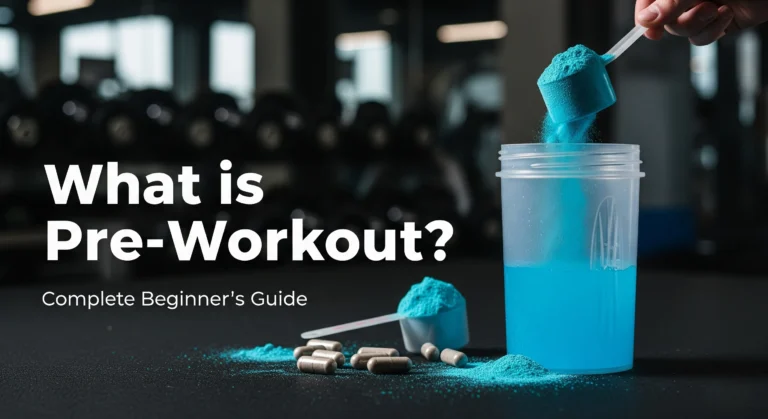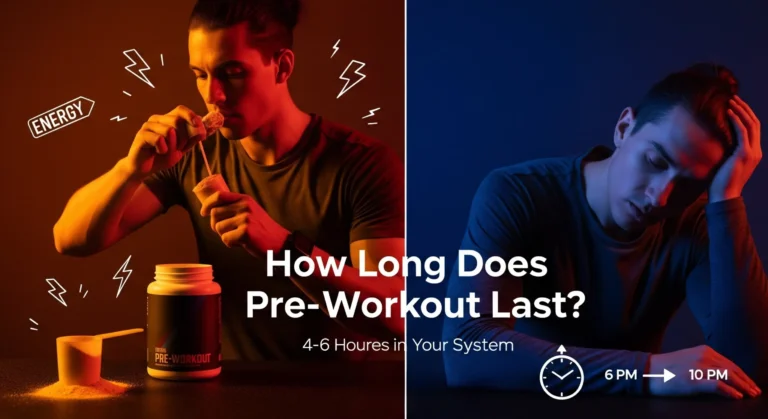
Did you know that the average protein powder costs $1.50 per serving, but you can make your own for just $0.40? I’ll be honest – I used to spend over $80 a month on protein supplements until I discovered how ridiculously easy it is to make them at home.
What started as a money-saving experiment turned into a complete game-changer for my nutrition routine. Not only did I slash my supplement costs by 70%, but I finally knew exactly what was going into my body – no mysterious fillers, artificial flavors, or questionable ingredients.
Back in 2019, I was that guy standing in the supplement aisle for 20 minutes, squinting at ingredient labels that looked like chemistry homework. Half the stuff I couldn’t even pronounce! Then my buddy Jake, who’s been making his own protein blends for years, showed me his setup. Simple kitchen equipment, whole food ingredients, and results that honestly blew my mind.
In this guide, I’ll walk you through everything I’ve learned about DIY protein supplements at home, from basic recipes to advanced formulations that rival expensive commercial brands.
Why Make Your Own Protein Supplements Instead of Buying Commercial Brands
Let me tell you about the wake-up call I had last year. I was checking my bank statements and realized I’d spent nearly $1,000 on protein powder alone. That’s when I decided to dig deeper into what I was actually paying for.
The markup on commercial protein powders is absolutely insane. You’re paying for fancy packaging, marketing campaigns, and about fifteen middlemen between the raw ingredients and your shaker bottle. When I started sourcing my own pea protein isolate, I discovered I could get the same quality stuff that goes into $60 tubs for about $12 per pound.
But here’s what really got me fired up – the ingredient lists. Most commercial brands stuff their products with fillers like maltodextrin, artificial flavors, and synthetic vitamins that your body barely recognizes. I had no idea that “natural vanilla flavor” could contain over 100 different chemical compounds. Yikes.
Making your own protein gives you complete control over every single ingredient. No more wondering if that weird aftertaste is from artificial sweeteners or questioning why your “chocolate” protein powder has 47 ingredients when chocolate should really only need a few.
The customization aspect is where things get really interesting though. Maybe you need extra fiber for digestive health, or you want to add adaptogens for stress management. Try finding that specific combination in stores – you’ll be searching forever and probably end up buying three different products.
I also discovered that homemade protein powder actually tastes better. Without all those preservatives and stabilizers, the natural flavors really shine through. My vanilla-cinnamon blend beats any commercial version I’ve tried, hands down.
Essential Equipment and Ingredients for DIY Protein Powder
Okay, let’s talk gear. The good news is you probably already have most of what you need sitting in your kitchen right now.
First up – you absolutely need a decent blender or food processor. I learned this the hard way when I tried making my first batch with a cheap bullet blender. The result was chunky, gritty, and honestly pretty gross. Invest in something with real power – at least 1000 watts if you can swing it.
My game-changer was picking up a refurbished Vitamix from their website. Cost me about $200, but it’s been worth every penny for the past three years. If that’s out of budget, a good food processor works great too. Just pulse instead of running continuously to prevent overheating.
For storage, mason jars are your best friend. They’re airtight, cheap, and you can see exactly what’s inside. I use the wide-mouth quart jars because they’re easier to scoop from. Pro tip: write the recipe and date on masking tape so you remember what worked.
Now for ingredients – this is where it gets fun. Your base protein sources are going to be things like pea protein isolate, hemp hearts, or pumpkin seed powder. I buy most of mine in bulk from online suppliers, but you can find smaller quantities at health food stores.
Pea protein isolate is my go-to because it’s complete, mixes well, and doesn’t have that chalky texture some plant proteins get. Hemp hearts add a nice nutty flavor and omega-3s, but they don’t blend as smooth. Pumpkin seed powder is awesome for magnesium and zinc, especially if you’re lifting heavy.
For flavoring, keep it simple. Real vanilla extract, raw cacao powder, and a tiny bit of stevia or monk fruit go a long way. I made the mistake early on of trying to recreate those artificial “birthday cake” flavors – trust me, stick with natural tastes that actually exist in nature.
Coconut flour or oat flour work great as thickeners if you want a more substantial shake. Just go easy – a tablespoon per serving is plenty or you’ll end up with protein pudding instead of a drink.
Basic Homemade Protein Powder Recipes for Beginners
Alright, let’s get our hands dirty with some actual recipes. I’m going to start you off with the three blends that I wish someone had given me when I started this journey.
Simple Vanilla Protein Base:
- 2 cups pea protein isolate
- 1/4 cup coconut flour
- 2 teaspoons pure vanilla extract
- 1 teaspoon stevia powder (or to taste)
- Pinch of sea salt
Blend everything for about 30 seconds until completely combined. This makes roughly 16 servings, and each scoop gives you about 22 grams of protein. The coconut flour adds fiber and makes it mix way smoother than just straight protein powder.
I remember my first batch of this – I was so excited that I made a shake immediately. The vanilla flavor was clean and natural, nothing like those artificial-tasting commercial versions. My wife even started stealing scoops for her morning smoothies.
Chocolate Peanut Butter Power Blend:
- 1.5 cups pea protein isolate
- 0.5 cups hemp hearts (ground fine)
- 1/3 cup raw cacao powder
- 2 tablespoons powdered peanut butter
- 1 teaspoon monk fruit sweetener
- 1/2 teaspoon cinnamon
This one’s my personal favorite for post-workout shakes. The hemp hearts add healthy fats and extra minerals, while the cacao gives you natural mood boosters. Fair warning though – don’t skip grinding the hemp hearts first or you’ll get little crunchy bits in your shake.
Green Superfood Recovery Blend:
- 1.5 cups pea protein isolate
- 1/2 cup pumpkin seed powder
- 2 tablespoons spirulina powder
- 1 tablespoon chlorella powder
- 1 teaspoon vanilla extract
- Stevia to taste
This one looks scary green but tastes surprisingly mild. The spirulina and chlorella pack serious nutrition – B vitamins, iron, antioxidants. I use this blend on days when I know my vegetable intake has been lacking.
Here’s the key with all these recipes – start with less sweetener than you think you need. You can always add more, but you can’t take it out. I learned that lesson when I made a batch so sweet it tasted like candy.
Advanced DIY Protein Formulations for Serious Athletes
Once you’ve mastered the basics, it’s time to level up. These advanced blends are what I use when I’m training hard and need specific nutritional support.
Pre-Workout Energy Protein:
- 1 cup pea protein isolate
- 1/2 cup hemp protein powder
- 1/4 cup maca powder
- 2 tablespoons raw cacao powder
- 1 tablespoon coconut milk powder
- 1 teaspoon ginseng powder
- Monk fruit to taste
The maca and ginseng provide natural energy without the crash you get from synthetic stimulants. I take this about 45 minutes before training, and the sustained energy is incredible. Way better than those pre-workouts loaded with artificial caffeine that make you feel jittery.
Post-Workout Recovery Formula:
- 1.5 cups pea protein isolate
- 1/2 cup tart cherry powder
- 1/4 cup collagen peptides
- 2 tablespoons BCAA powder (unflavored)
- 1 tablespoon turmeric powder
- 1 teaspoon black pepper (for turmeric absorption)
- Natural vanilla and stevia to taste
The tart cherry powder is a game-changer for reducing muscle soreness. I discovered this when I was training for a marathon and constantly dealing with inflammation. The collagen helps with joint recovery, and the turmeric keeps everything from getting too inflamed.
Nighttime Slow-Release Blend:
- 1 cup casein protein (or make your own with cottage cheese powder)
- 1/2 cup pea protein isolate
- 1/4 cup ground flaxseed
- 2 tablespoons ashwagandha powder
- 1 tablespoon magnesium glycinate powder
- Vanilla and stevia to taste
This one’s designed for better sleep and overnight muscle recovery. The casein provides slow-digesting protein, while ashwagandha helps with stress and sleep quality. I make this into a thick pudding-like consistency and eat it with a spoon before bed.
The key with these advanced blends is to introduce new ingredients slowly. Don’t go from basic vanilla protein to a 12-ingredient superfood blend overnight. Your digestive system needs time to adjust, especially with things like spirulina or large amounts of fiber.
Storage, Safety, and Shelf Life of Homemade Protein Supplements
This is where I made some expensive mistakes early on, so learn from my errors. Proper storage isn’t just about keeping your protein powder fresh – it’s about preventing some seriously nasty bacterial growth.
First rule: everything needs to be bone dry before mixing. I once added slightly damp coconut flour to a batch, and within a week the whole jar had developed this gross moldy smell. Threw away two pounds of expensive ingredients and learned my lesson.
Glass mason jars with tight-fitting lids are non-negotiable for storage. Plastic containers can absorb odors and let moisture in. I keep my jars in a cool, dark pantry – definitely not above the stove where temperature fluctuates like crazy.
Homemade protein powder generally stays fresh for 3-6 months if stored properly. That’s way shorter than commercial versions because we’re not using preservatives. I write the mixing date on each jar and try to use older batches first.
Here’s something most people don’t think about – cross-contamination. Use clean, dry scoops every single time. Don’t dip the same spoon you used for your pre-workout shake into your post-workout blend. Bacteria love protein powder, and mixing different formulations can create weird chemical reactions.
Signs your homemade protein has gone bad: off smells (especially sour or musty), clumping that doesn’t break up when stirred, or any visible mold growth. When in doubt, throw it out. Food poisoning from spoiled protein powder is not worth the $20 you might save.
I also learned to make smaller batches more frequently rather than huge amounts that sit around. It’s slightly more work, but the freshness and safety are worth it.
Troubleshooting Common DIY Protein Powder Problems
Let me save you from the frustrating trial-and-error process I went through. These are the most common issues you’ll face and exactly how to fix them.
Problem #1: Gritty, Chalky Texture
This drove me absolutely nuts for months. The solution is usually in your blending technique. Pulse your ingredients in small batches rather than dumping everything in at once. Also, sift your protein powder through a fine mesh strainer before mixing – removes those annoying lumps that never seem to break down.
Problem #2: Won’t Mix in Liquid
If your homemade protein powder sits at the bottom of your shaker cup like cement, you probably have too much fiber or starch. Cut back on coconut flour or oat powder by half. Adding a tiny bit of lecithin powder (like 1/4 teaspoon per cup) works as a natural emulsifier.
Problem #3: Overpowering Flavors
I once made a batch with too much stevia that was literally undrinkable. Sweet to the point of being bitter. Start with way less flavoring than you think you need – you can always add more to individual servings. For strong ingredients like spirulina or maca, begin with just a teaspoon per large batch.
Problem #4: Clumping After Storage
This happens when moisture gets in, even tiny amounts. Throw a couple of those silica gel packets (clean ones!) into your storage jars. You can buy food-safe versions online. Also, let everything cool to room temperature before sealing if you’ve been blending for a while.
Problem #5: Weird Aftertaste
Usually means one of your ingredients has gone rancid. Nuts, seeds, and their powders can go bad faster than you’d expect. Smell each ingredient individually – trust your nose. Hemp hearts are notorious for developing a fishy smell when they’re past their prime.
The biggest lesson I learned? Keep detailed notes about what works and what doesn’t. I have a little notebook where I write down every recipe variation, including the failures. It’s saved me from repeating the same mistakes multiple times.
Cost Analysis: How Much Money You’ll Actually Save
Time for some real numbers, because this is probably why you’re here in the first place. I tracked my spending for six months of DIY protein versus commercial brands, and the results were pretty eye-opening.
Commercial Protein Powder Costs (per month):
- Premium whey protein (2 lbs): $45
- Plant-based blend (2 lbs): $38
- Pre-workout protein: $32
- Recovery formula: $28
Total monthly cost: $143
DIY Ingredients (bulk purchase, lasts 3-4 months):
- Pea protein isolate (10 lbs): $65
- Hemp hearts (5 lbs): $35
- Raw cacao powder (2 lbs): $18
- Coconut flour (5 lbs): $12
- Various superfoods/flavoring: $45
Total upfront cost: $175 (equivalent to about $44 per month)
The math is pretty clear – I’m saving roughly $100 per month, or $1,200 per year. But here’s what really surprised me: the quality is actually better than most commercial brands I was buying.
Initial equipment investment was about $250 for a good blender and storage supplies. That paid for itself in less than three months of savings. If you already have a decent blender, you’re looking at maybe $30 for jars and measuring tools.
The bulk purchasing does require more upfront cash, which might not work for everyone’s budget. You can start smaller by buying 2-3 pound bags instead of 10-pound ones, but the per-unit cost will be higher.
One thing I didn’t expect – I actually consume less protein powder now because I’m more mindful about it. When you’re making it yourself, you naturally pay more attention to how much you’re using versus mindlessly scooping from an expensive tub.
Pro tip: Split bulk orders with friends or gym buddies. Most suppliers offer better pricing on larger quantities, and protein powder ingredients have decent shelf lives.
Conclusion
Making your own protein supplements isn’t just about saving money – though the 60-70% cost reduction is pretty sweet. It’s about taking control of what fuels your body and knowing that every scoop contains exactly what you need, nothing you don’t.
The journey from supplement-aisle confusion to confident DIY protein maker has been one of the most rewarding changes I’ve made to my fitness routine. No more mystery ingredients, no more paying premium prices for fancy marketing, and definitely no more wondering what that weird aftertaste actually is.
Start with one basic recipe and experiment from there. My vanilla protein base is still my go-to three years later, though I’ve probably made fifty variations of it by now. Your taste buds (and your wallet) will thank you.
Remember, the best protein supplement is the one you’ll actually use consistently, so don’t be afraid to adjust these recipes until you find your perfect blend. Some people love that earthy hemp flavor, others can’t stand it. Some need extra sweetness, others prefer it barely sweetened at all.
The most important thing is to start. Pick up some pea protein isolate and vanilla extract this weekend. Make a small batch of the basic vanilla recipe. I guarantee you’ll be hooked once you taste the difference between real ingredients and whatever’s in those commercial tubs.
Ready to ditch the overpriced tubs of mystery powder? Drop a comment below and let me know which recipe you’re planning to try first – I love hearing about other people’s DIY protein adventures and what modifications work best for different goals!



